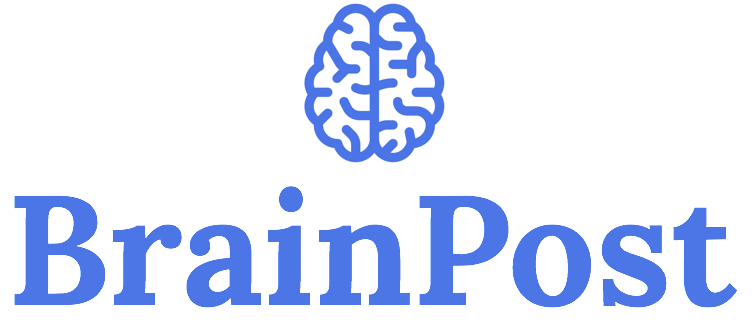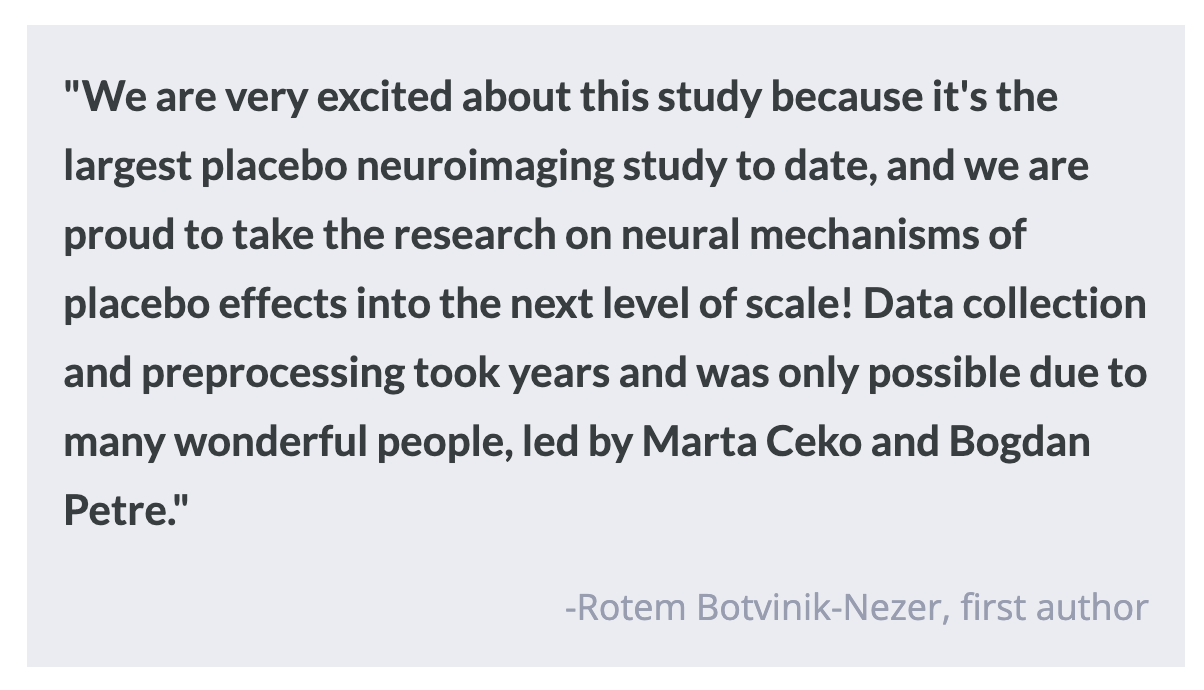The Placebo Effect is Driven by Brain Regions Associated with Value and Motivation
Post by Lila Metko
The takeaway
Placebo effects are forged by internal neural processes that bring about improved health. Interestingly, those who experience a placebo effect do not show decreased activity in brain regions associated with early pain perception, but rather brain systems relating to value and motivation.
What's the science?
Many current theories posit that pain is primarily a top-down phenomenon. Higher-level brain regions integrate contextual and affective information with sensory signals about potentially harmful stimuli to create predictions about future pain. The placebo effect is when someone’s physical or mental health improves after taking a placebo or 'dummy' treatment. Previous brain imaging studies have shown reductions in neural activity in pain processing regions such as the medial and ventrolateral thalamus and dorsal posterior insula to be correlated with analgesia after the administration of a placebo (the reduction of a pain sensation). This week in Nature Communications, Botnivik-Nezer and colleagues tracked fMRI activity across two different pain signatures (i.e., patterns of brain activity) in the brain in placebo and control conditions to understand the brain mechanisms involved in the placebo effect.
How did they do it?
Approximately 395 participants received an application of a control cream with “no effects” or a cream presented to them as a pain-relieving drug (placebo) on different fingers of the left hand. Conditioning paradigms were then used to strengthen the placebo effect. To illustrate, in one paradigm participants were exposed to a range of thermal stimuli on both the control and placebo fingers, but unbeknownst to the participant, the stimuli were not as strong on the placebo finger. Participants then had the creams reapplied such that four fingers had a cream: two placebo, and two control, so that the authors could test for mechanical pain and thermal pain in both control and placebo condition fingers. They were then monitored in an MRI scanner a test task, in which they would be presented with a stimulus and would need to respond with a rating of its intensity and degree of unpleasantness. The stimuli were presented at low, medium, and high intensities with a randomized order of which pain modality was being examined (thermal or mechanical pain). The authors then calculated the extent of placebo analgesia for each participant and compared it to changes in brain activity in two fMRI brain signatures for pain, the Neurologic Pain Signature (NPS) and the Stimulus Intensity Independent Pain Signature (SIIPS). The NPS is a signature more associated with the initial, unprocessed perception of painful stimuli based on the sensory input, whereas the SIIPS is more associated with neural structures that provide the top-down, internal evaluation of pain. Additionally, the authors compared the placebo effects on a conditioned pain modality (thermal) to an unconditioned pain modality (mechanical) to test for transfer of the placebo effect to unreinforced modalities.
What did they find?
Participants experienced a placebo effect and reported less pain in the placebo compared to the control condition. Focusing on the neural response, the authors found that while the NPS fMRI score increased during both thermal and mechanical stimuli and higher NPS score correlated with increased stimulus intensity, there was no effect of placebo analgesia on the NPS score for either modality. Interestingly, in both thermal and mechanical modalities the placebo scores were significantly lower for the SIIPS neural signature than the control scores. This indicates that the placebo effect is likely mediated by higher-level pain processing systems, which are represented in the SIIPS but not in the NPS. Additionally, it was found that participants’ ratings for mechanical pain, a modality that had not been conditioned with the placebo cream, were lower in the placebo finger than the control. When the average placebo effect for participants was compared between the two modalities, there was no difference between the thermal and mechanical placebo effect scores, providing further evidence that the placebo effect is transferable across pain modalities. However, a correlation between expected results for the placebo cream (pre-testing) and test ratings was only found in the thermal (conditioned) modality.
What's the impact?
This is the first study to investigate the effect of placebo analgesia on brain activity using a large sample size and two well-validated brain signatures for pain. The findings of this study suggest that the placebo effect is driven by higher-order brain systems that integrate value into pain perception rather than lower-level systems that are active earlier in pain processing. This is important because, with more detailed knowledge about the placebo mechanism, practitioners may be able to focus treatments on higher-level cognitive processes to treat pain.



